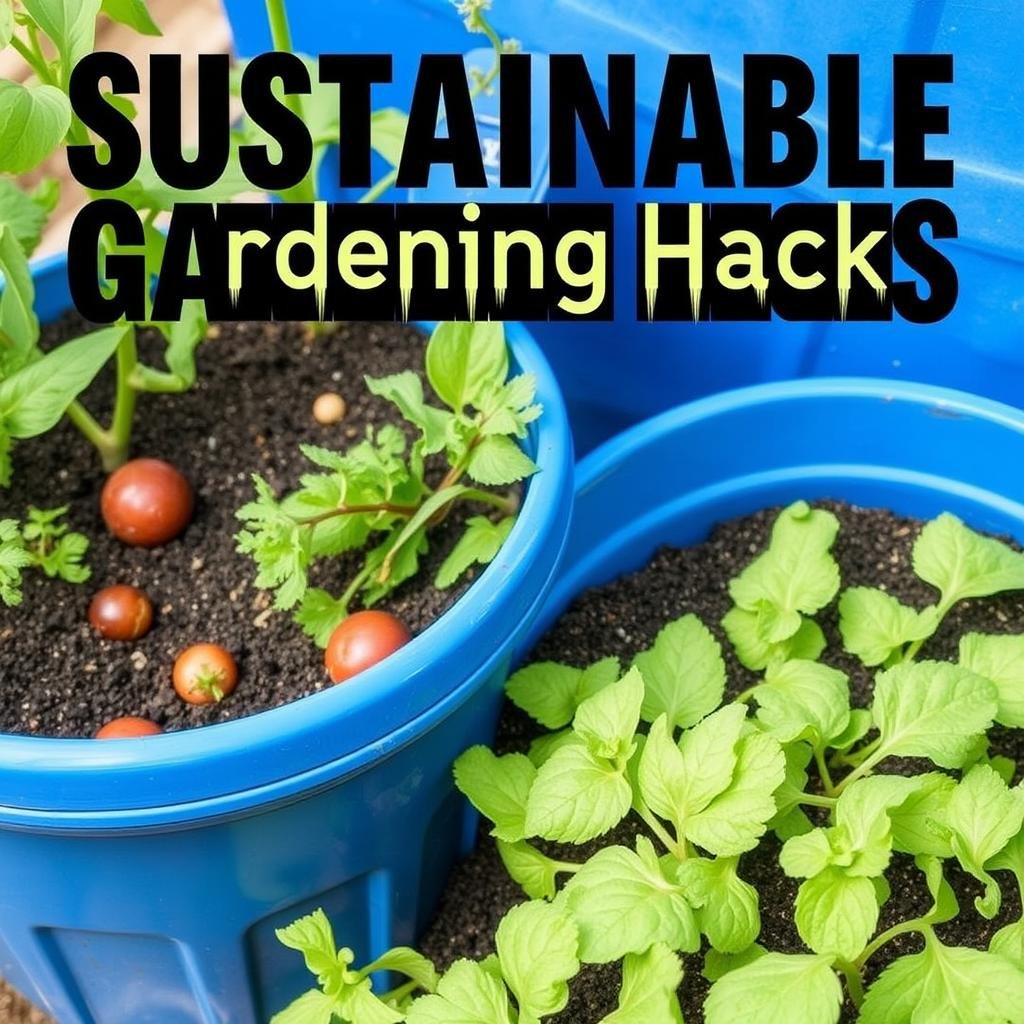Gardening is a powerful act of sustainability, allowing us to grow food, nurture biodiversity, and reduce our ecological footprint. Yet, even within gardening, there are ways to go above and beyond in reducing waste and caring for the environment. This summer, why not take your green thumb to a whole new level with sustainable gardening practices that not only protect the planet but also improve your yields?
This guide will walk you through practical and eco-friendly gardening hacks, covering everything from testing your soil naturally to saving seeds for future harvests. Whether you’re an eco-conscious gardener, a city dweller with a budding urban garden, or someone looking to live more sustainably, these tips will empower you to create a greener, thriving garden.
Understanding Your Soil: Natural Testing and Amendments
Healthy soil is the foundation of all successful gardens. Before you plant, it’s crucial to understand what’s happening beneath the surface.
Natural Soil Testing
Testing your soil doesn’t need to involve expensive kits or lab work. Here are a few natural methods:
- DIY pH Test: Take some soil and mix it with vinegar. If it fizzes, your soil is alkaline. A mixture of soil and baking soda fizzing means it is acidic.
- Earthworm Count: Dig a small hole and look for earthworms. A high number of worms indicates healthy, nutrient-rich soil. If they’re missing, it’s a sign your soil could use improvement.
Natural Soil Amendments
Once you’ve tested your soil, enrich it naturally:
- Use Coffee Grounds: Rich in nitrogen, coffee grounds help improve soil texture and provide plants with a slow-release source of nutrients. Sprinkle them lightly over your soil or compost them for the best results.
- Add Crushed Eggshells: These provide a slow release of calcium, which is especially useful for tomatoes, peppers, and eggplants to prevent blossom-end rot.
Composting 101: Turning Waste into Garden Gold
Composting is one of the most powerful ways to reduce household waste while nourishing your soil. It’s also surprisingly easy once you get the hang of it.
What to Compost
- Kitchen Scraps: Fruit and vegetable peels, coffee grounds, and eggshells.
- Yard Waste: Grass clippings, dry leaves, and small branches.
- Avoid: Meat, dairy, and oily foods, which can attract pests and slow down the compost process.
Tips for Efficient Composting
- Aim for a balanced mix of “greens” (wet, nitrogen-rich materials like veggie scraps) and “browns” (dry, carbon-rich items like fallen leaves).
- Turn your compost regularly to aerate it and speed up decomposition.
- Keep the pile moist—not soaking wet, but similar to a damp sponge.
The result? Rich, crumbly compost that improves water retention and adds essential nutrients to your plants.
Water Conservation: Efficient Irrigation Techniques
Water is essential in gardening, but it’s also a resource we should conserve. Here are some hacks to reduce water waste without sacrificing plant health.
- Drip Irrigation: This system delivers water slowly and directly to the roots, reducing evaporation and runoff. It’s easy to install and works brilliantly for vegetable gardens and flower beds.
- Mulching: Add a layer of organic mulch (like straw or shredded leaves) around your plants. This helps soil retain moisture while also suppressing weeds.
- Rain Barrels: Collect rainwater in barrels to use as an eco-friendly alternative to tap water for your garden.
Natural Pest Control: Safe and Effective Methods
Pests are every gardener’s nemesis, but harmful chemicals are not the solution. Here are safer, natural ways to keep those pesky critters at bay:
- Companion Planting: Pair plants that benefit each other. For example, planting marigolds near vegetables like tomatoes deters pests like aphids and nematodes while attracting pollinators.
- Encourage Beneficial Insects: Invite ladybugs, lacewings, and bees into your garden by planting diverse, pollinator-attracting flowers.
- DIY Organic Sprays: Mix soap and water or garlic and chilli in a spray bottle to target problem areas, keeping aphids, beetles, and mites away effectively.
Seed Saving: Preserving Heirloom Varieties
Seed saving is a simple yet impactful way to promote biodiversity and reduce reliance on store-bought seeds. It’s also a great way to preserve heirloom plants with unique flavours and characteristics.
How to Save Seeds
- Choose the best, healthiest plants to harvest seeds from.
- Dry seeds thoroughly before storing to prevent mould.
- Store them in a cool, dry place in labelled envelopes or jars for easy access next season.
Seed saving not only saves money but also ensures plant resilience, as the seeds adapt to your local environment over time.
Reducing Plastic Use: Eco-Friendly Garden Tools and Practices
Plastic waste is a growing problem worldwide, but your garden doesn’t have to be part of it. Implement these simple swaps to create a more eco-friendly setup:
- Choose Bamboo or Wooden Tools: Tools like garden trowels, rakes, and stakes made from bamboo or wood are durable and biodegradable.
- DIY Planters: Upcycle items like old cans, jars, or even tyres as plant containers instead of buying plastic pots.
- Avoid Plastic Mulch: Opt for organic mulches like straw, which decompose naturally and enrich the soil.
Nurturing a Greener Tomorrow
Gardening is much more than planting flowers or growing vegetables. It’s about being mindful of the resources you use and the impact you leave behind. By adopting sustainable gardening hacks—from composting and water conservation to natural pest control and seed saving—you can grow a thriving garden that respects and nurtures the environment.
Simply put, every action you take toward sustainability contributes to a healthier planet. And isn’t it exciting to know that your backyard can play a role in building a greener tomorrow?
If you’re ready to take the next step toward eco-conscious gardening, start experimenting with these methods today. Remember, small changes add up over time, and the more people join in, the larger the impact we’ll all make!

